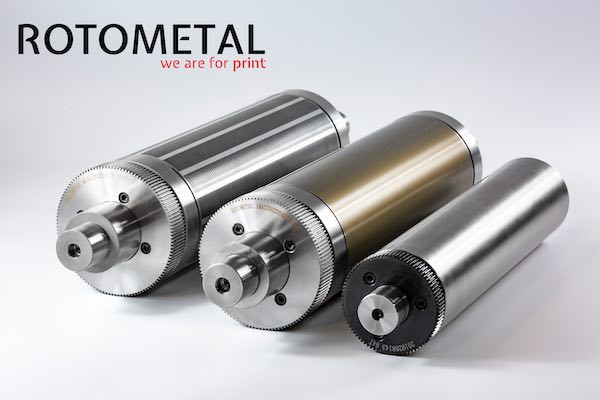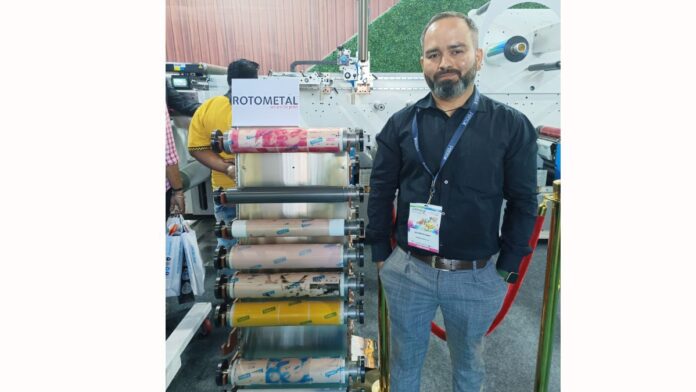Founded in 2006, Rotometal is a company based in Poland that manufactures magnetic cylinders, printing cylinders, anvils, rotary cutting units, and numerous other tools used in the printing business. For printing and packaging converters company has introduced its new AntiFriction Print Cylinder, which was displayed on the U.V. Graphics stand at Pamex.
The new Antifriction Print Cylinders facilitate and speed up work at the production plant level. Less effort is required when removing tape and foams with no adhesive residue left on the cylinder.
This innovative printing tool production method made it possible to obtain exceptional surface smoothness while maintaining a high hardness of about 450 HV, depending on the aluminum alloy used. The ANTIFRICTION coating used in the Rotometal printing cylinders also gives better protection against damage.
Sales Manager for India, Mr.Bhupesh Tilwani, said ‘A breakthrough solution that optimizes the friction properties and the smoothness of the coating thanks to the use of the Polymeroxid®-matrix, which is cross-linked with a special LF4 polymer throughout its thickness. The pioneering solution enabled us to manufacture tools with unprecedented functional properties, which, by combining high durability and optimal adhesion, distinguish us from other suppliers.’

Advantages of New AntiFriction print cylinder:
· Completely new Polymeroxid®-matrix which is spread over the entire thickness of the cylinder.
· Material can be removed in one piece; trouble-free.
· Removal of tapes and foams does not require much force thanks to the technologies used.
· Fast belt change without adhesive residue on the cylinder surface.
· High surface smoothness.
· Coating hardness around 450HV.
· Optimal adhesion of the foam to the glue – holds well during printing and is easy to disassemble.
· ANTIFRICTION coating provides better protection against scratches.
· Possibility of making lines along and transverse lines to facilitate the assembly of the dies.
“Before being dispatched to the customer, each product is checked by our Quality Control Department for compliance with the technical drawing and accepted in-house standards – a structured inspection scheme.” Concludes Bupesh.












